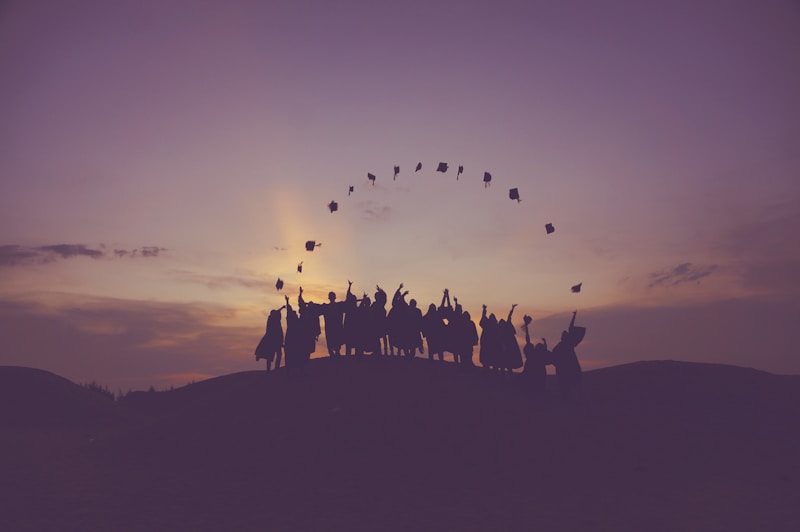Podcast
Questions and Answers
शारीरिक शिक्षा का मुख्य उद्देश्य क्या है?
शारीरिक शिक्षा का मुख्य उद्देश्य क्या है?
एक व्यापक शारीरिक शिक्षा कार्यक्रम के घटक में निम्नलिखित में से क्या शामिल है?
एक व्यापक शारीरिक शिक्षा कार्यक्रम के घटक में निम्नलिखित में से क्या शामिल है?
शारीरिक शिक्षा के मानसिक स्वास्थ्य पर प्रभाव की विशेषता क्या है?
शारीरिक शिक्षा के मानसिक स्वास्थ्य पर प्रभाव की विशेषता क्या है?
कौन-सी गतिविधियाँ शारीरिक शिक्षा कार्यक्रम में समग्र शारीरिक स्वास्थ्य में सुधार के लिए महत्वपूर्ण हैं?
कौन-सी गतिविधियाँ शारीरिक शिक्षा कार्यक्रम में समग्र शारीरिक स्वास्थ्य में सुधार के लिए महत्वपूर्ण हैं?
Signup and view all the answers
शारीरिक शिक्षा पाठ्यक्रम में सामाजिक कौशल का विकास कैसे होता है?
शारीरिक शिक्षा पाठ्यक्रम में सामाजिक कौशल का विकास कैसे होता है?
Signup and view all the answers
शारीरिक शिक्षा कार्यक्रम के उद्देश्य में दी गई जानकारी के अनुसार, निम्नलिखित में से कौन सा नहीं है?
शारीरिक शिक्षा कार्यक्रम के उद्देश्य में दी गई जानकारी के अनुसार, निम्नलिखित में से कौन सा नहीं है?
Signup and view all the answers
शारीरिक शिक्षा का कौन सा घटक मौलिक आंदोलन कौशल के विकास में सहायक है?
शारीरिक शिक्षा का कौन सा घटक मौलिक आंदोलन कौशल के विकास में सहायक है?
Signup and view all the answers
शारीरिक शिक्षा किस प्रकार के वातावरण की सृष्टि करने में मदद करती है?
शारीरिक शिक्षा किस प्रकार के वातावरण की सृष्टि करने में मदद करती है?
Signup and view all the answers
शारीरिक शिक्षा कार्यक्रमों को लागू करने में प्रमुख कठिनाइयों में से कौन सी है?
शारीरिक शिक्षा कार्यक्रमों को लागू करने में प्रमुख कठिनाइयों में से कौन सी है?
Signup and view all the answers
छात्रों के लिए पोषण और स्वस्थ जीवनशैली पर शिक्षा का मुख्य उद्देश्य क्या है?
छात्रों के लिए पोषण और स्वस्थ जीवनशैली पर शिक्षा का मुख्य उद्देश्य क्या है?
Signup and view all the answers
शारीरिक शिक्षा कार्यक्रमों की प्रभावशीलता का मूल्यांकन कैसे किया जाता है?
शारीरिक शिक्षा कार्यक्रमों की प्रभावशीलता का मूल्यांकन कैसे किया जाता है?
Signup and view all the answers
शारीरिक शिक्षा में शिक्षक प्रशिक्षण और समर्थन की आवश्यकता क्यों होती है?
शारीरिक शिक्षा में शिक्षक प्रशिक्षण और समर्थन की आवश्यकता क्यों होती है?
Signup and view all the answers
भविष्य में शारीरिक शिक्षा में एक प्रमुख प्रवृत्ति क्या है?
भविष्य में शारीरिक शिक्षा में एक प्रमुख प्रवृत्ति क्या है?
Signup and view all the answers
शारीरिक शिक्षा के क्षेत्र में 'लाइफलोंग हैबिट्स' का क्या महत्व है?
शारीरिक शिक्षा के क्षेत्र में 'लाइफलोंग हैबिट्स' का क्या महत्व है?
Signup and view all the answers
शारीरिक शिक्षा में छात्रों की विविध आवश्यकताओं का समाधान कैसे किया जा सकता है?
शारीरिक शिक्षा में छात्रों की विविध आवश्यकताओं का समाधान कैसे किया जा सकता है?
Signup and view all the answers
शारीरिक शिक्षा के कार्यक्रम की प्रभावशीलता का मूल्यांकन करने के लिए क्या महत्वपूर्ण है?
शारीरिक शिक्षा के कार्यक्रम की प्रभावशीलता का मूल्यांकन करने के लिए क्या महत्वपूर्ण है?
Signup and view all the answers
Study Notes
Definition and Purpose of Physical Education
- Physical education (PE) is a planned program of activities that aims to develop the physical, cognitive, social, and emotional capabilities of individuals.
- Core aim is to promote lifelong physical activity and healthy lifestyles.
- Contributes to overall well-being, including physical fitness, motor skills, and knowledge about health and wellness.
- Encourages participation in physical activities and fosters a positive attitude towards a healthy lifestyle.
- It plays a crucial part in developing fundamental movement skills, such as running, jumping, throwing, and catching.
Components of a Comprehensive Physical Education Program
- Motor Skill Development: Focuses on acquiring fundamental movement skills (e.g., throwing, catching, jumping, and running). Develops more complex skills through practice and refined technique.
- Physical Fitness: Aims to improve cardiovascular endurance, muscular strength, and flexibility. Emphasizes various activities that promote these fitness elements.
- Health-Related Knowledge: Provides information on nutrition, hygiene, injury prevention, and disease awareness. Educates on responsible behaviour related to physical activity.
- Social Development: Builds teamwork, cooperation, and sportsmanship skills among students. Encourages positive interaction and respect among individuals.
- Cognitive Development: Develops problem-solving skills, decision-making abilities, and strategies related to physical activities. Understanding the principles behind physical activities and sports.
- Creating a Dynamic Learning Environment: Engaging and enjoyable activities are used to promote enthusiasm and participation and cater to diverse learning styles.
Benefits of Physical Education
- Physical Health: Improves cardiovascular health, bone density, and muscular strength. Reduces the risk of chronic diseases such as heart disease and obesity.
- Mental Well-being: Promotes stress reduction, improves mood, and enhances cognitive function. Offers a positive outlet for emotional release and stress management.
- Social Skills: Encourages social interaction, teamwork, and communication among peers. Developing leadership and communication skills.
- Academic Performance: Evidence linking physical activity to improved attention span, focus, and academic performance. Contributes to better concentration and memory.
- Lifelong Habits: Provides a foundation for lifelong physical activity, empowering individuals to maintain a healthy active lifestyle into adulthood.
Challenges in Implementing Physical Education Programs
- Time Constraints: Limited time allocated to PE in the curriculum often presents a barrier to comprehensive programming.
- Resource Constraints: Lack of adequate facilities, equipment, and qualified teachers may hinder program effectiveness and create difficulties in implementing the program.
- Diverse Needs and Abilities: Addressing the diverse needs and abilities of students requires a flexible curriculum and differentiated instruction. Challenges in providing tailored programs for all.
- Teacher Training and Support: Need for comprehensive professional development in teaching physical education and providing ongoing support to teachers.
- Changing Societal Demands: Keeping pace with changing demographics, lifestyles, and technological advancements demands adaptability in program design and implementation.
Specific Areas of Focus in Physical Education
- Game Instruction: Guiding students through basic and advanced games, including team sports and individual activities.
- Exercise Techniques: Training both in skill and knowledge and developing mastery
- Safety and Injury Prevention: Implementing strategies to prevent and manage injuries and ensuring a safe learning environment.
- Nutrition and Healthy Lifestyle: Educating students on the importance of healthy eating habits as they relate to physical activity and performance. Guidance on proper hydration and nutrient intake.
Evaluating Physical Education Programs
- Student Performance: Assessing students' progress in developing motor skills, fitness levels, and social-emotional skills.
- Program Effectiveness: Analyzing the impact of the program on student outcomes and satisfaction levels, including participant feedback and observations.
- Teacher Qualifications and Support: Evaluating teacher preparedness, training, and mentorship.
- Facilities and Resources: Examining the adequacy of facilities, equipment, and other available resources.
Future Trends in Physical Education
- Integration of Technology: Using technology for enhanced learning and motivational strategies in physical education.
- Emphasis on Lifelong Activity: Promoting sustainable physical activity habits that extend beyond the school program.
- Addressing Health Awareness: Creating awareness regarding health and wellness.
- Personalized Learning: Providing individualized programs and approaches to cater to diverse needs and learning styles.
- Promoting Inclusivity and Equity: Designing programs for diverse participant types, catering to varying abilities and backgrounds.
Studying That Suits You
Use AI to generate personalized quizzes and flashcards to suit your learning preferences.
Description
शारीरिक शिक्षा (PE) एक योजनाबद्ध कार्यक्रम है जिसका लक्ष्य व्यक्तियों की शारीरिक, संज्ञानात्मक, सामाजिक और भावनात्मक क्षमताओं का विकास करना है। इसका मुख्य उद्देश्य जीवनभर शारीरिक गतिविधि और स्वस्थ जीवनशैली को बढ़ावा देना है। यह समग्र कल्याण में योगदान देता है और बुनियादी आंदोलन कौशल विकसित करने में सहायक होता है।





